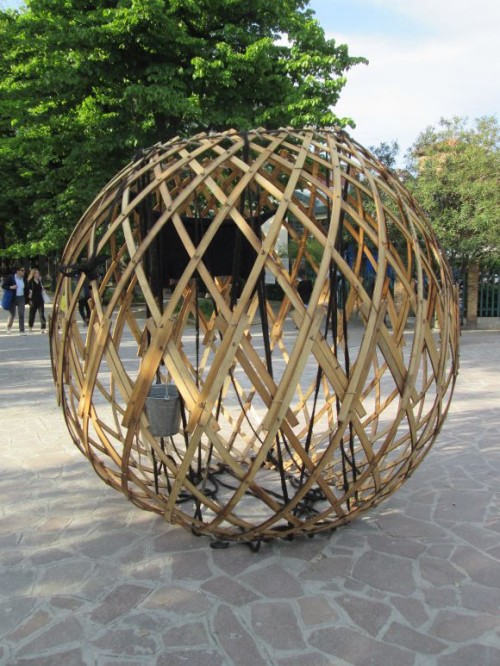
“Biennial” means “every two years” in, I suppose, every language from Amharic to Tongan. Even in Italian.
But in Venice, “Biennale” has come to mean “The Voltron of international modern art exhibitions put on every single year to draw more people here for longer so they’ll, you know, spend money.”
The original event was inaugurated in April 30, 1895 and was dedicated solely to art. Back then, that meant painting and sculpture. But scheduling it to skip a year meant losing momentum, and limiting it to painting and sculpture was dangerously droll.
By now some Venice Biennale opens every spring, so they have worked around the logistical and etymological complications of “bi” by having created an assortment of choices — there is, alternatively, the Biennale of Art, Architecture, Dance, Music, Theatre, and the Venice Film Festival, which has always been once a year, though I suppose if there were a way to have one every four months the city would rejoice.
The opening weekend of the annual Biennale, of whatever sort, as I have chronicled in other years, is a spectacular spasm of art objects and art people in the zone of the Giardini, where the national pavilions are. You have to pay to see what’s in there, but for these few triumphant days the neighborhood is bestrewn with art of the performance and/or concept variety. Or something.
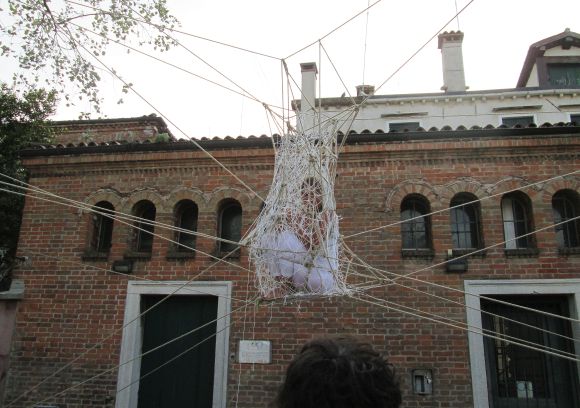
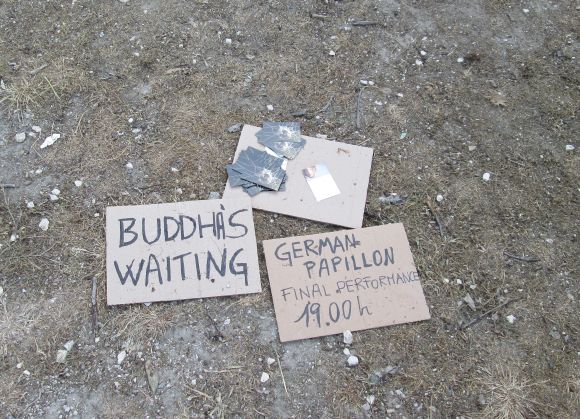
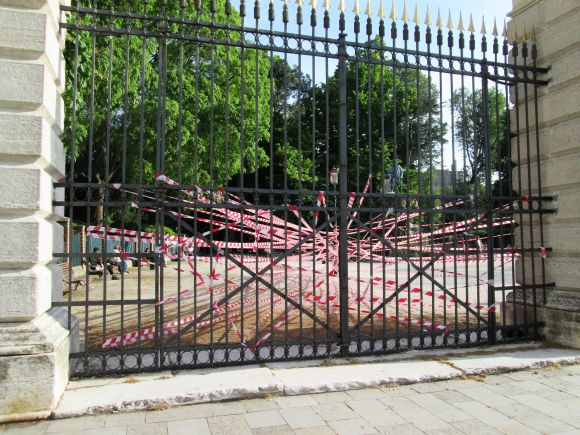
It’s hugely entertaining to see this gathering of the art clans in their startling garb, as well as the blithe spirits who come to demonstrate their feats of skill and daring. They’re here to exhibit something about themselves, about the world, about what’s wrong with the world, about what’s wrong with everything, about I don’t really know what the heck what.
I dimly recall that perplexed unenlightened viewers used to be sneered at because they didn’t understand the work before them — peasants! But now I have the impression that artists have ceased to concern themselves with being understood. If these artists were people who had undergone years of therapy, I’d think that this state of mind represented progress.
As it is, I don’t know what it represents. My grasp of the convoluted symbolism now in vogue is extremely feeble, and certain exotic forms of irony are evidently beyond my mental or emotional capacity to comprehend, much less appreciate.
But I’m cool with all this now. If they don’t care about being understood, I’m not worried about not understanding.
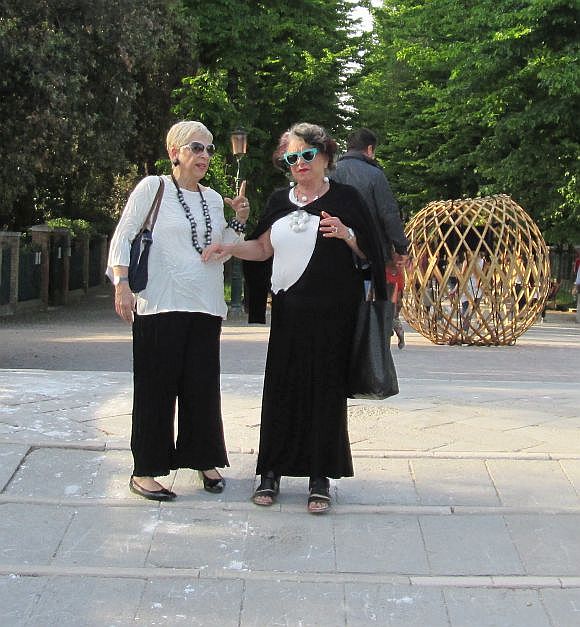
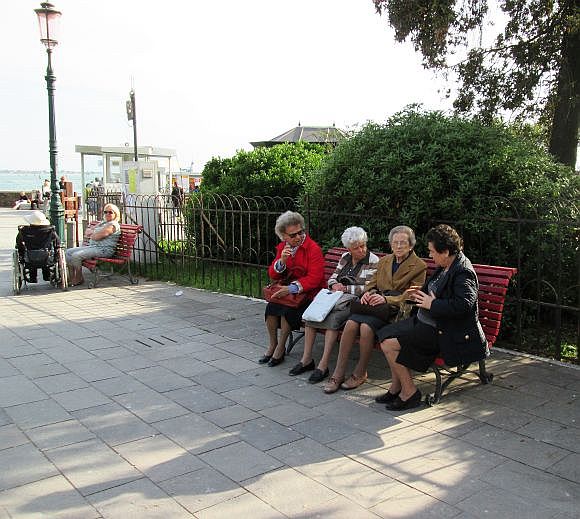
Two thoughts have taken up permanent residence in my brain.
One: That much of contemporary art has gotten trapped in the Dadaism Room and can’t get out. (The room has no doors, being Dadaist and all, ha ha).
Here’s the five-second rundown on Dada, helpfully summarized by Wikipedia:
The term anti-art, a precursor to Dada, was coined by Marcel Duchamp around 1913 when he created his first readymades.[2] Dada, in addition to being anti-war, had political affinities with the radical left and was also anti-bourgeois.[3]
The beginnings of Dada correspond to the outbreak of World War I. For many participants, the movement was a protest against the bourgeois nationalist and colonialist interests, which many Dadaists believed were the root cause of the war, and against the cultural and intellectual conformity—in art and more broadly in society—that corresponded to the war.
Dada activities included public gatherings, demonstrations, and publication of art/literary journals; passionate coverage of art, politics, and culture were topics often discussed in a variety of media.
So if it seems that art and politics and social causes have thrown themselves into a hot-tub together and are drying off in the Biennale, there is a long history of this already. Nothing new going on here, folks, sorry.
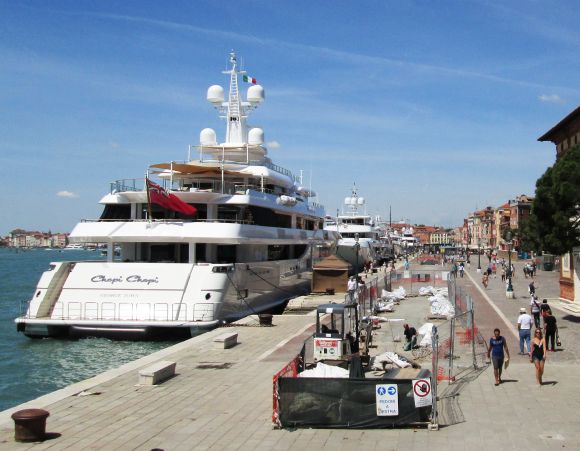
Two: That much of the art seen here, and anywhere else these artistoids go, doesn’t refer so much to culture as it does to other art. It’s the visual equivalent of novels that are really about language. Conclusion: As it gets broader and covers more conceptual territory, art is becoming shallower and shallower. Western culture itself may be in the process of shallowization, but art is only making it worse.
Paul Gauguin noticed something of this already happening in the late 1800’s: “The history of modern art is also the history of the progressive loss of art’s audience,” he observed. “Art has increasingly become the concern of the artist and the bafflement of the public.”
We wandered, baffled and bemused, around and through the throngs over the weekend, and below are some examples of what we saw on Friday and Saturday (Opening Night!). The Biennale will go on till November 22; this divertissement gets longer each year. If they continue at this rate, eventually it will just be simply the “Ennale.”
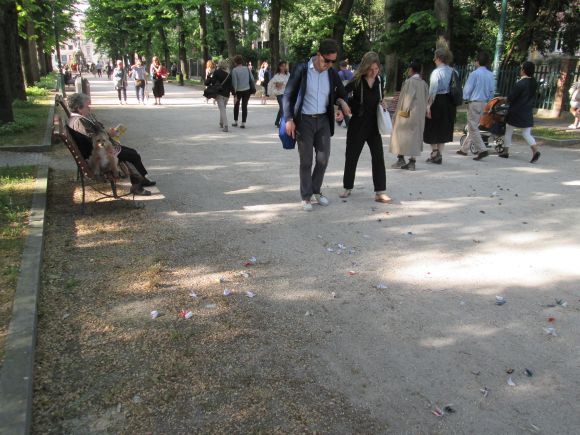

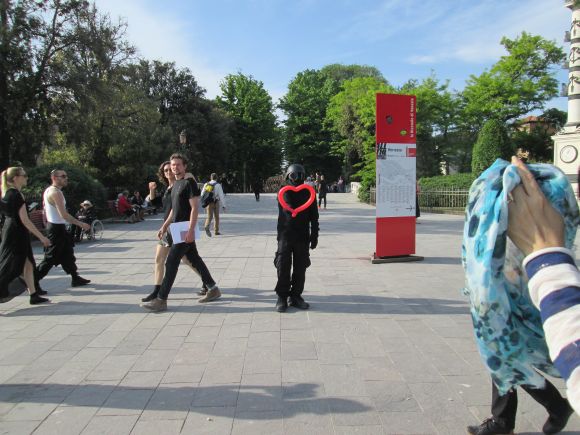
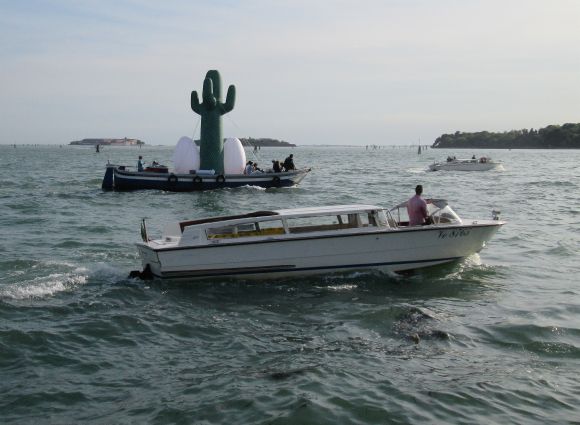
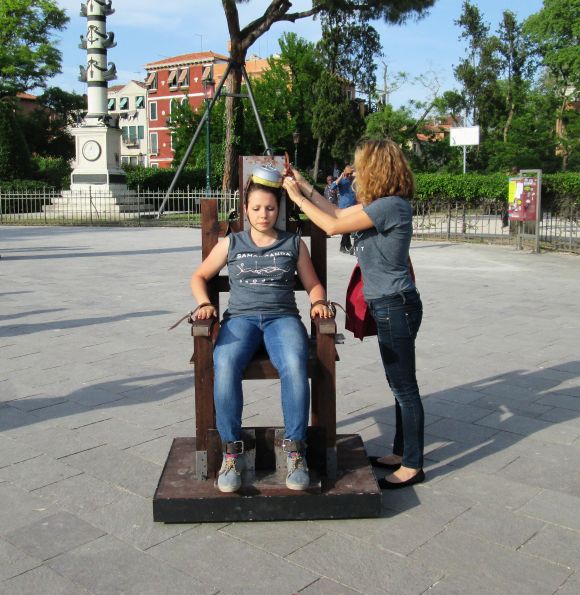
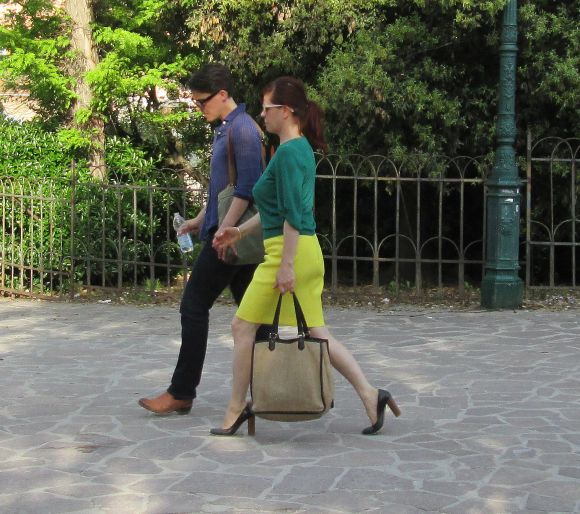
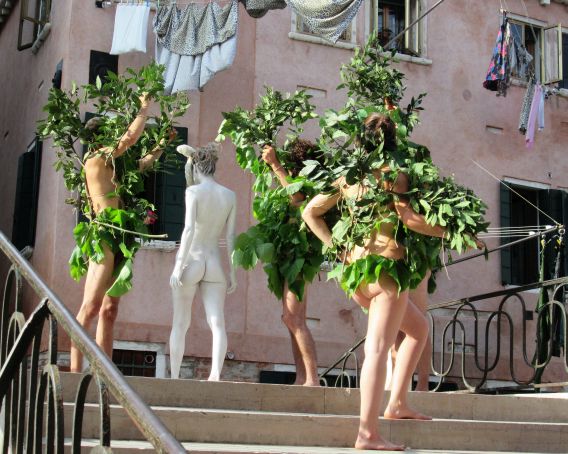

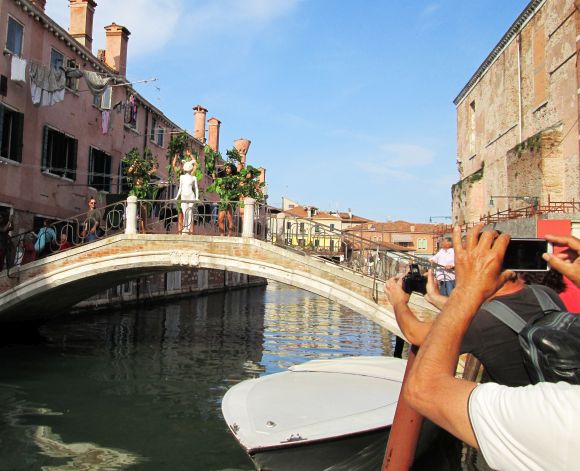



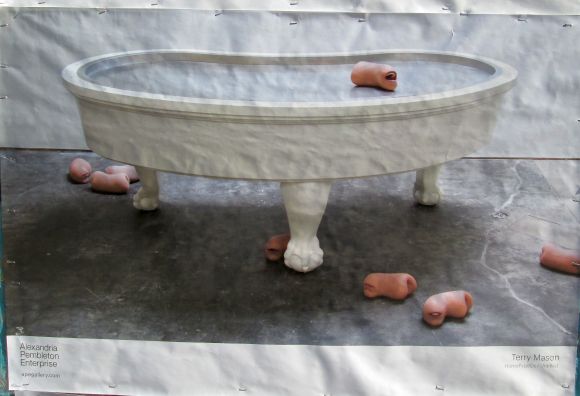
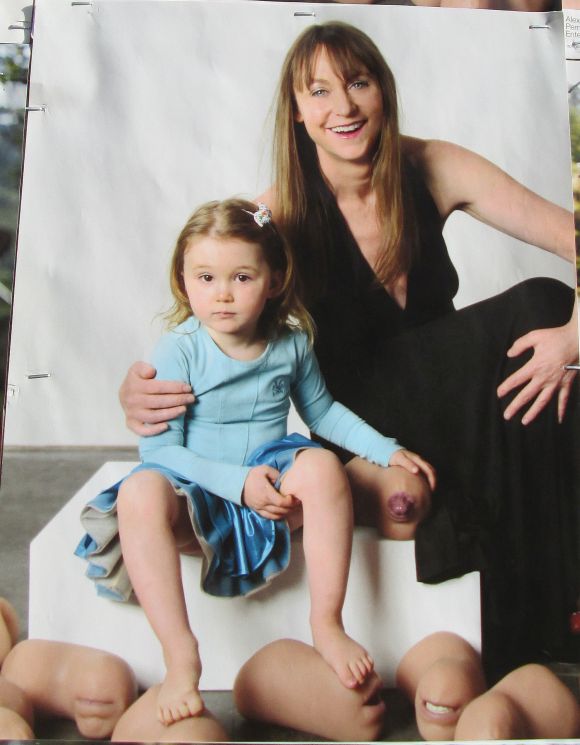

7 Comments
Dear Erla,
Thanks so much for your comprehensive digest of what we will be able to see or avoid when we arrive in Venice next Monday. And we have only three weeks to get round it all! Please let bunny head know that we’re coming, though you should warn her that rabbits are a national pest in Australia and she could be shot on sight.
We so much hope that there will be additional symbolism to experience on the Zattere as we step out of our door there, something for instance like the “display” some years ago of table napkins nailed to the walls of a restaurant in Campo Angelo Raffaele, while the nervous creator paced outside, wearing a suit several times too large, worn over a bare chest. Possibly he was hoping to see the public flocking in to view his masterpiece.
Meanwhile, we went on enjoying our meal.
We will certainly be checking to see if they’ve replaced the noses of Wagner and Verdi in the Giardini.
Best wishes for your sanity at this puzzling time, John & Nora.
You should be prepared to see that the noses are still missing. Two slightly damaged statues don’t rank very high on the Venetian-Problems list.
Wonderful post, Erla, with brilliant considerations on today’s art and artists.
“If they don’t care about being understood I won’t worry about not understanding” is, IMHO, the right attitude: thank you for that and I’ll quote you!
I’ve waited for over 10 years to re-visit Venice this August. If I had realized that the Biennale was this year I would have waited another year! Guess I’ll need another map, one to avoid the exhibits. Thanks for the great blog! Do you think the same five women will be ‘bunnies’ all summer?
There’s a Biennale every year, so not much chance of escaping all the madness. But you can get a Biennale map (or look at their website) to plan your trajectory. The woman with the bunny mask and her frondy friends disappeared about an hour after they were sighted, and have never been seen since. They have evidently returned to their native habitat on Planet Look-at me, Look-at-me.
I haven’t laughed so many times through an article, ever!
High praise! Thanks!